Business and Management: Organisational Structure Comparison Report
VerifiedAdded on 2020/10/05
|12
|2586
|299
Report
AI Summary
This report delves into the realm of business and management, focusing on the organisational structures of small, medium, and large-sized companies: Airdri, Ragus Sugars, and Tesco, respectively. The report begins by comparing the organisational charts of these companies, highlighting differences in command chains, hierarchies, and spans of control. It then explores the purposes of management within each organisation, such as attracting customers, maximizing sales and profits, formulating strategies, and expanding market share. The report further examines the application of various management theories, including bureaucracy, systems approach, and human relations, within these organisations. It then analyses different organisational structures like functional, divisional, and matrix structures. Finally, the report outlines the roles of senior, middle, and junior managers within each company, along with arguments for and against their respective structures. This comprehensive analysis provides insights into how different organisational structures and management approaches are applied in practice to achieve business objectives.

Business and
Management
Management
Paraphrase This Document
Need a fresh take? Get an instant paraphrase of this document with our AI Paraphraser
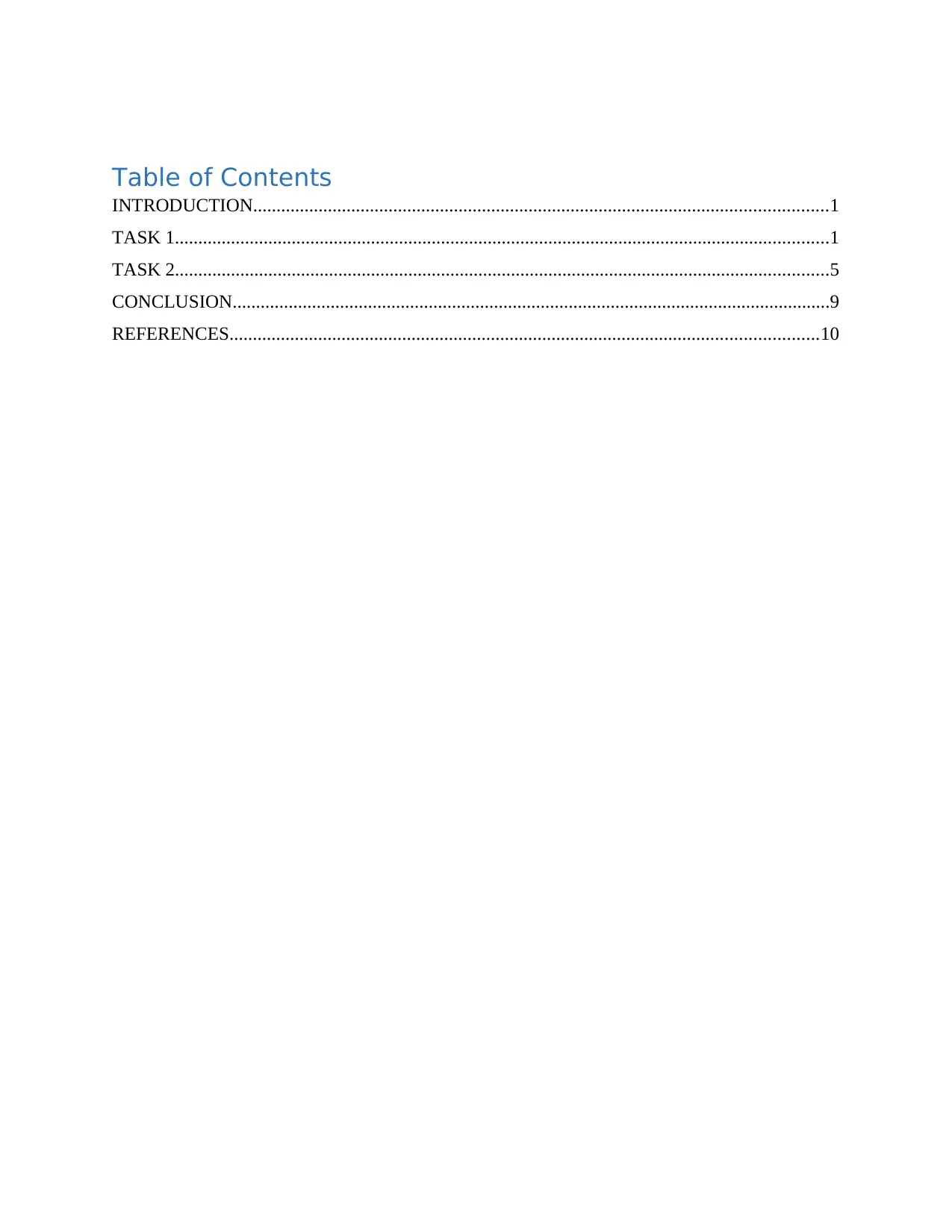
Table of Contents
INTRODUCTION...........................................................................................................................1
TASK 1............................................................................................................................................1
TASK 2............................................................................................................................................5
CONCLUSION................................................................................................................................9
REFERENCES..............................................................................................................................10
INTRODUCTION...........................................................................................................................1
TASK 1............................................................................................................................................1
TASK 2............................................................................................................................................5
CONCLUSION................................................................................................................................9
REFERENCES..............................................................................................................................10
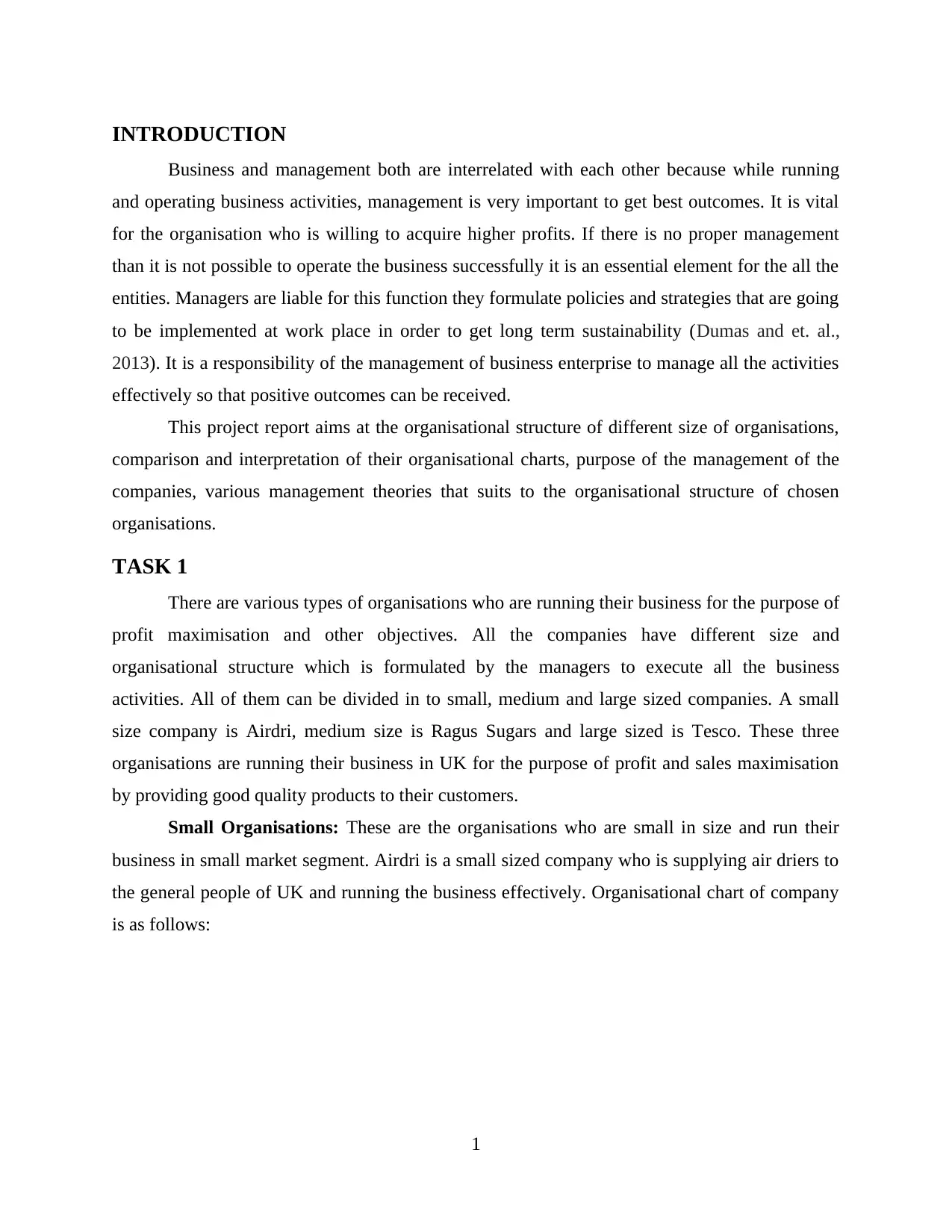
INTRODUCTION
Business and management both are interrelated with each other because while running
and operating business activities, management is very important to get best outcomes. It is vital
for the organisation who is willing to acquire higher profits. If there is no proper management
than it is not possible to operate the business successfully it is an essential element for the all the
entities. Managers are liable for this function they formulate policies and strategies that are going
to be implemented at work place in order to get long term sustainability (Dumas and et. al.,
2013). It is a responsibility of the management of business enterprise to manage all the activities
effectively so that positive outcomes can be received.
This project report aims at the organisational structure of different size of organisations,
comparison and interpretation of their organisational charts, purpose of the management of the
companies, various management theories that suits to the organisational structure of chosen
organisations.
TASK 1
There are various types of organisations who are running their business for the purpose of
profit maximisation and other objectives. All the companies have different size and
organisational structure which is formulated by the managers to execute all the business
activities. All of them can be divided in to small, medium and large sized companies. A small
size company is Airdri, medium size is Ragus Sugars and large sized is Tesco. These three
organisations are running their business in UK for the purpose of profit and sales maximisation
by providing good quality products to their customers.
Small Organisations: These are the organisations who are small in size and run their
business in small market segment. Airdri is a small sized company who is supplying air driers to
the general people of UK and running the business effectively. Organisational chart of company
is as follows:
1
Business and management both are interrelated with each other because while running
and operating business activities, management is very important to get best outcomes. It is vital
for the organisation who is willing to acquire higher profits. If there is no proper management
than it is not possible to operate the business successfully it is an essential element for the all the
entities. Managers are liable for this function they formulate policies and strategies that are going
to be implemented at work place in order to get long term sustainability (Dumas and et. al.,
2013). It is a responsibility of the management of business enterprise to manage all the activities
effectively so that positive outcomes can be received.
This project report aims at the organisational structure of different size of organisations,
comparison and interpretation of their organisational charts, purpose of the management of the
companies, various management theories that suits to the organisational structure of chosen
organisations.
TASK 1
There are various types of organisations who are running their business for the purpose of
profit maximisation and other objectives. All the companies have different size and
organisational structure which is formulated by the managers to execute all the business
activities. All of them can be divided in to small, medium and large sized companies. A small
size company is Airdri, medium size is Ragus Sugars and large sized is Tesco. These three
organisations are running their business in UK for the purpose of profit and sales maximisation
by providing good quality products to their customers.
Small Organisations: These are the organisations who are small in size and run their
business in small market segment. Airdri is a small sized company who is supplying air driers to
the general people of UK and running the business effectively. Organisational chart of company
is as follows:
1
⊘ This is a preview!⊘
Do you want full access?
Subscribe today to unlock all pages.

Trusted by 1+ million students worldwide
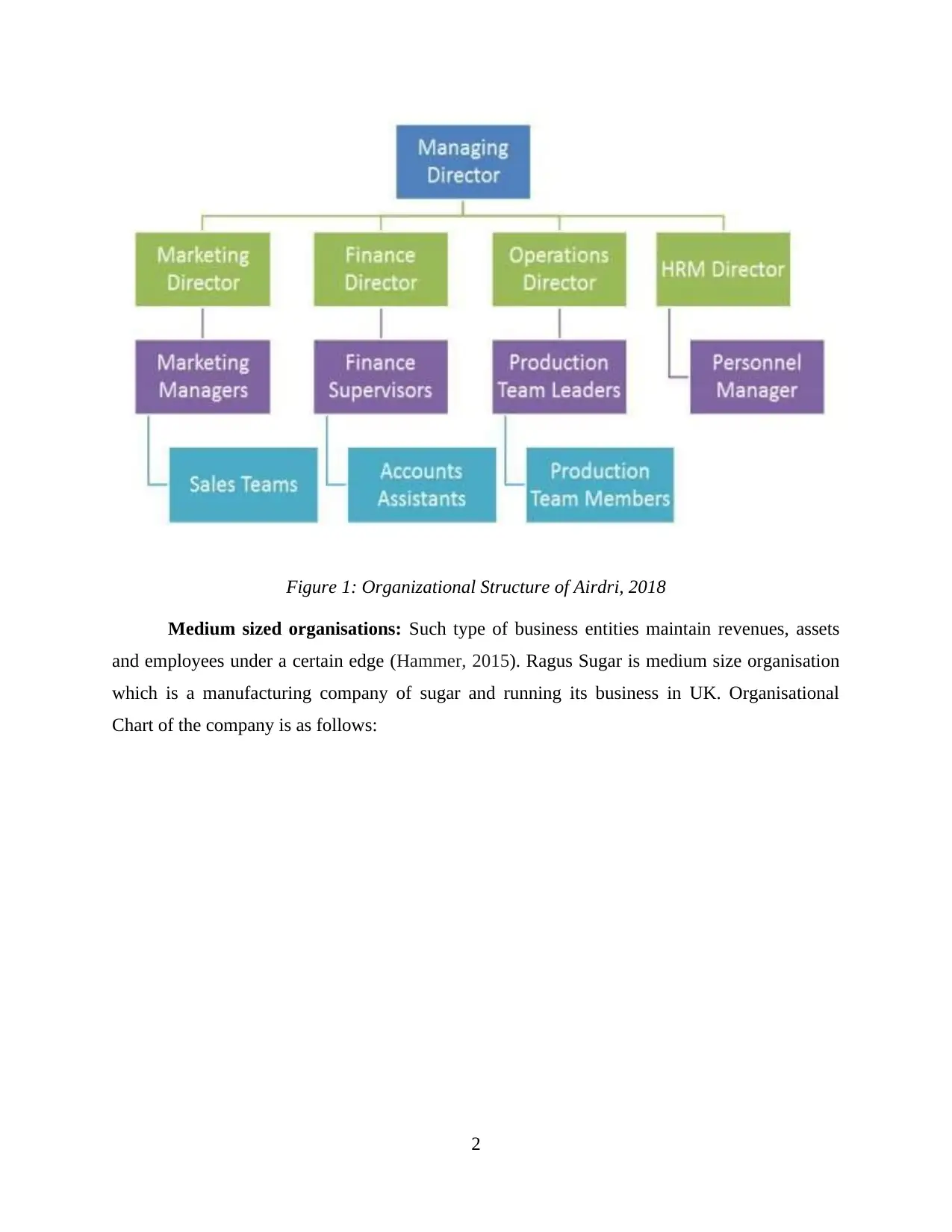
Figure 1: Organizational Structure of Airdri, 2018
Medium sized organisations: Such type of business entities maintain revenues, assets
and employees under a certain edge (Hammer, 2015). Ragus Sugar is medium size organisation
which is a manufacturing company of sugar and running its business in UK. Organisational
Chart of the company is as follows:
2
Medium sized organisations: Such type of business entities maintain revenues, assets
and employees under a certain edge (Hammer, 2015). Ragus Sugar is medium size organisation
which is a manufacturing company of sugar and running its business in UK. Organisational
Chart of the company is as follows:
2
Paraphrase This Document
Need a fresh take? Get an instant paraphrase of this document with our AI Paraphraser
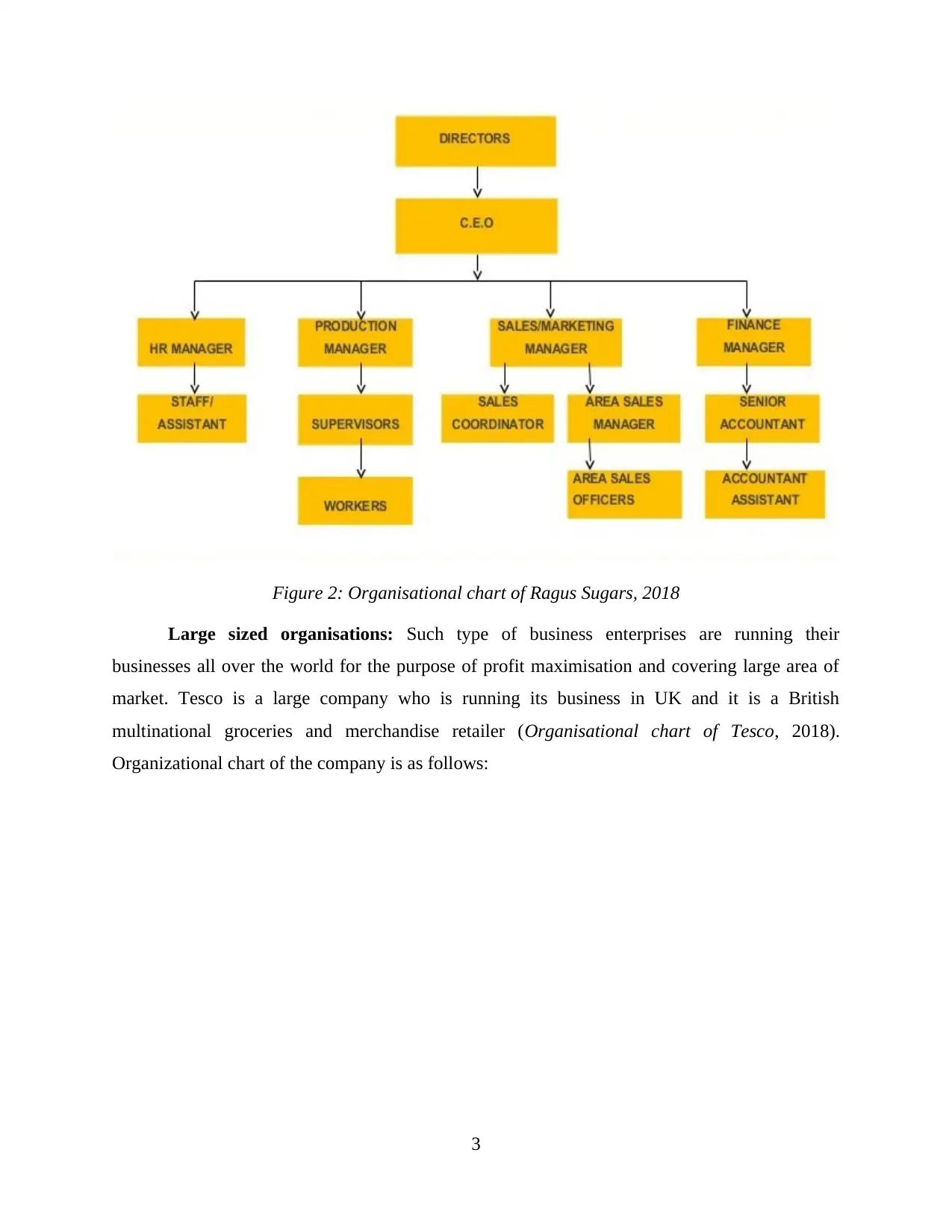
Figure 2: Organisational chart of Ragus Sugars, 2018
Large sized organisations: Such type of business enterprises are running their
businesses all over the world for the purpose of profit maximisation and covering large area of
market. Tesco is a large company who is running its business in UK and it is a British
multinational groceries and merchandise retailer (Organisational chart of Tesco, 2018).
Organizational chart of the company is as follows:
3
Large sized organisations: Such type of business enterprises are running their
businesses all over the world for the purpose of profit maximisation and covering large area of
market. Tesco is a large company who is running its business in UK and it is a British
multinational groceries and merchandise retailer (Organisational chart of Tesco, 2018).
Organizational chart of the company is as follows:
3
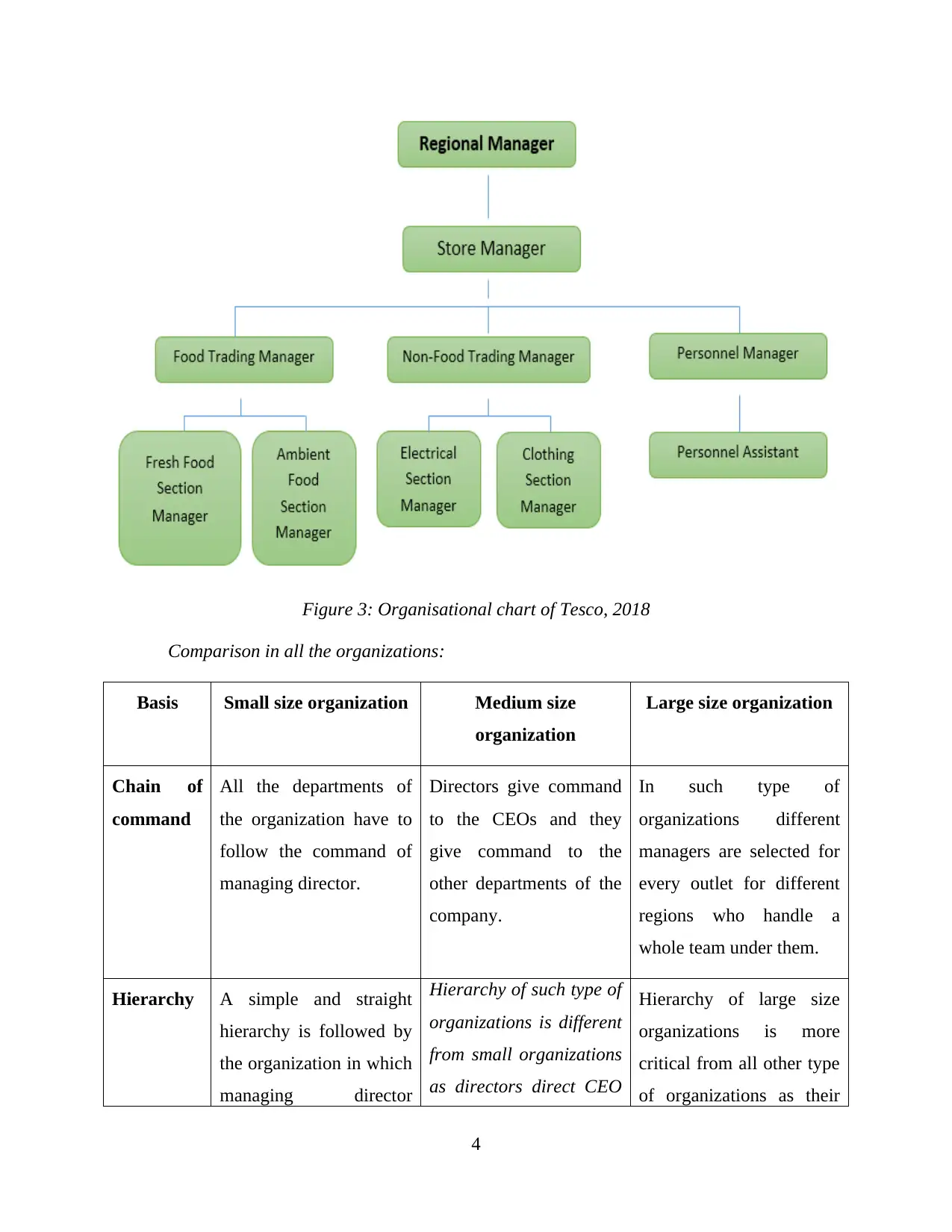
Figure 3: Organisational chart of Tesco, 2018
Comparison in all the organizations:
Basis Small size organization Medium size
organization
Large size organization
Chain of
command
All the departments of
the organization have to
follow the command of
managing director.
Directors give command
to the CEOs and they
give command to the
other departments of the
company.
In such type of
organizations different
managers are selected for
every outlet for different
regions who handle a
whole team under them.
Hierarchy A simple and straight
hierarchy is followed by
the organization in which
managing director
Hierarchy of such type of
organizations is different
from small organizations
as directors direct CEO
Hierarchy of large size
organizations is more
critical from all other type
of organizations as their
4
Comparison in all the organizations:
Basis Small size organization Medium size
organization
Large size organization
Chain of
command
All the departments of
the organization have to
follow the command of
managing director.
Directors give command
to the CEOs and they
give command to the
other departments of the
company.
In such type of
organizations different
managers are selected for
every outlet for different
regions who handle a
whole team under them.
Hierarchy A simple and straight
hierarchy is followed by
the organization in which
managing director
Hierarchy of such type of
organizations is different
from small organizations
as directors direct CEO
Hierarchy of large size
organizations is more
critical from all other type
of organizations as their
4
⊘ This is a preview!⊘
Do you want full access?
Subscribe today to unlock all pages.

Trusted by 1+ million students worldwide

supervise various
departments and the
heads of those divisions
direct all other
employees.
and they supervise
managers of different
departments and all the
managers give command
to the teams who are
working under them
(Jeston, 2014).
business if operated in
various regions so th
regional managers are
selected by the directors
and they handle an outlet
of a region.
Span of
control
All the control remains in
the hands of the
managing directors and
they control the activities
of all the organizations.
Control is divided in to
different persons like
directors, CEO,
department managers etc.
Control is divided by the
owners to different
managers who are
controlling an outlet at
different locations.
Similarities in all the organizations: There are various similarities in such type of
organizations all of them are explained below:
All the organizations are running and operating their business to acquire higher amount
of profits.
Main purpose of the companies is to acquire higher market share so that the business can
be expanded.
Another similarity in such type of organizations is to maximize the sales by satisfying
needs of the customers.
All the companies are using policies to analyze their strategies so that the business can
get a huge success.
All the organizations are running their business successfully and it is very important for all of
them to manage their activities effectively to get higher profits and increased sales. Good and
effective management can help to acquire higher market share so that the business may get huge
success in the market. If companies are willing to attain long term sustainability than proper
management and efficient actions for the problems can help for this purpose (Maylor, Blackmon
and Huemann, 2016).
5
departments and the
heads of those divisions
direct all other
employees.
and they supervise
managers of different
departments and all the
managers give command
to the teams who are
working under them
(Jeston, 2014).
business if operated in
various regions so th
regional managers are
selected by the directors
and they handle an outlet
of a region.
Span of
control
All the control remains in
the hands of the
managing directors and
they control the activities
of all the organizations.
Control is divided in to
different persons like
directors, CEO,
department managers etc.
Control is divided by the
owners to different
managers who are
controlling an outlet at
different locations.
Similarities in all the organizations: There are various similarities in such type of
organizations all of them are explained below:
All the organizations are running and operating their business to acquire higher amount
of profits.
Main purpose of the companies is to acquire higher market share so that the business can
be expanded.
Another similarity in such type of organizations is to maximize the sales by satisfying
needs of the customers.
All the companies are using policies to analyze their strategies so that the business can
get a huge success.
All the organizations are running their business successfully and it is very important for all of
them to manage their activities effectively to get higher profits and increased sales. Good and
effective management can help to acquire higher market share so that the business may get huge
success in the market. If companies are willing to attain long term sustainability than proper
management and efficient actions for the problems can help for this purpose (Maylor, Blackmon
and Huemann, 2016).
5
Paraphrase This Document
Need a fresh take? Get an instant paraphrase of this document with our AI Paraphraser

TASK 2
Various organisations are running business in order to maximise tehri profits and the
managers of the companies decide the purpose so that all of them can be achieved and the
business can be expanded effectively. Purpose for all type of organisations are explained below:
Small size organisation: Airdri is a small sized organisation who is currently operating
in UK. It is a manufacturing company who produce air driers. The management of the company
formulate different policies to attain all the predetermined goals and objectives. All the purpose
of the management of the organisation are explained below:
Attract customers: The main purpose of the management in small organisations like
Airdri is to attract more and more customers so that the business can be expanded and the
business can get a huge success. Managers in Airdri implement various policies to attract
customers so that higher market share can be attained.
Maximise sales: Another purpose of the managers in small size organisations is to maximise
sales so that the business may compete with the competitors and the business can survive in the
market (Myers, 2013).
Medium sized organisations: Ragus Sugars is a medium sized organisation and running its
business effectively in UK. The management of the company is having various purposes all of
them are explained below:
Maximise profits: Main purpose of the managers in such type of organisations is to
enhance profitability so that higher funds can be generated to perform all the operational
activities. Managers in Ragus Sugars are focusing on this purpose and trying to attain the
same so that the organisation can become a large scale company.
Formulate effective strategies: Management of Ragus Sugars is also concerned with the
formulation of effective strategies to achieve competitive advantage in the market. These
strategies can help to reach the objectives easily.
Large size organisations: Tesco is a large size organisation who is running its business in UK
as well as other countries. The company has attained huge success. Purposes of the management
of the business entity are explained below:
Acquire higher market share: Managers of the company are willing to acquire higher
market share in order to attain higher market share this will help to maximise profitability
and productivity because if the company is earning high profits than it will provide higher
6
Various organisations are running business in order to maximise tehri profits and the
managers of the companies decide the purpose so that all of them can be achieved and the
business can be expanded effectively. Purpose for all type of organisations are explained below:
Small size organisation: Airdri is a small sized organisation who is currently operating
in UK. It is a manufacturing company who produce air driers. The management of the company
formulate different policies to attain all the predetermined goals and objectives. All the purpose
of the management of the organisation are explained below:
Attract customers: The main purpose of the management in small organisations like
Airdri is to attract more and more customers so that the business can be expanded and the
business can get a huge success. Managers in Airdri implement various policies to attract
customers so that higher market share can be attained.
Maximise sales: Another purpose of the managers in small size organisations is to maximise
sales so that the business may compete with the competitors and the business can survive in the
market (Myers, 2013).
Medium sized organisations: Ragus Sugars is a medium sized organisation and running its
business effectively in UK. The management of the company is having various purposes all of
them are explained below:
Maximise profits: Main purpose of the managers in such type of organisations is to
enhance profitability so that higher funds can be generated to perform all the operational
activities. Managers in Ragus Sugars are focusing on this purpose and trying to attain the
same so that the organisation can become a large scale company.
Formulate effective strategies: Management of Ragus Sugars is also concerned with the
formulation of effective strategies to achieve competitive advantage in the market. These
strategies can help to reach the objectives easily.
Large size organisations: Tesco is a large size organisation who is running its business in UK
as well as other countries. The company has attained huge success. Purposes of the management
of the business entity are explained below:
Acquire higher market share: Managers of the company are willing to acquire higher
market share in order to attain higher market share this will help to maximise profitability
and productivity because if the company is earning high profits than it will provide higher
6

benefits to the employees. This step can help to motivate employees and enhance
productivity.
Expand business worldwide: As Tesco is already a multinational company but
managers want to open more outlets in different companies to expand the business
worldwide.
Theories: Different management theories are applied in the organisations in order to
maintain their effectiveness. All the applied theories are explained below:
Bureaucracy: It was introduced by Max Weber which is mainly based upon the office rules that
are essential to follow for every employee. It is mainly followed by small organisations as they
have small number of people to control the workers. It is followed in Airdri by managers to
supervise all the staff members who are responsible to perform operational activities (Saunders
and Lewis, 2012).
System approach: This approach become popular in year 1960 as it helps to reduce
complexities form organisational structure. It helps the managers to allot right and
appropriate tasks to the workers and to monitors the same. In Ragus Sugars this approach
is followed by the managers in order to integrate technology and people to enhance
productivity.
Human relation approach: This type of approach is used in large type of organisations
as there are various employees to be controlled in different regions. It is mainly
concerned with work force motivation, leadership and easy communication among
employees and managers. This approach is used in Tesco as it is a large size organisation
and it is very important to influence and motivate the employees in order to acquire
higher market share.
Organisational structure: In all the organisations different structure is followed in order
to control and monitor actions of the employees. It is also formulated by the managers to fulfil
the purpose. All the structures are explained below:
Functional structure: In such type of structure all the divisions of the organisations are set
according to the purpose. In Airdri this structure is followed by the managers in order to fulfil the
purpose. It is very helpful for the company as it can help to execute all the operations effectively
by analysing the skills and knowledges of the employees (Vom Brocke, Petry and Gonser, 2016).
7
productivity.
Expand business worldwide: As Tesco is already a multinational company but
managers want to open more outlets in different companies to expand the business
worldwide.
Theories: Different management theories are applied in the organisations in order to
maintain their effectiveness. All the applied theories are explained below:
Bureaucracy: It was introduced by Max Weber which is mainly based upon the office rules that
are essential to follow for every employee. It is mainly followed by small organisations as they
have small number of people to control the workers. It is followed in Airdri by managers to
supervise all the staff members who are responsible to perform operational activities (Saunders
and Lewis, 2012).
System approach: This approach become popular in year 1960 as it helps to reduce
complexities form organisational structure. It helps the managers to allot right and
appropriate tasks to the workers and to monitors the same. In Ragus Sugars this approach
is followed by the managers in order to integrate technology and people to enhance
productivity.
Human relation approach: This type of approach is used in large type of organisations
as there are various employees to be controlled in different regions. It is mainly
concerned with work force motivation, leadership and easy communication among
employees and managers. This approach is used in Tesco as it is a large size organisation
and it is very important to influence and motivate the employees in order to acquire
higher market share.
Organisational structure: In all the organisations different structure is followed in order
to control and monitor actions of the employees. It is also formulated by the managers to fulfil
the purpose. All the structures are explained below:
Functional structure: In such type of structure all the divisions of the organisations are set
according to the purpose. In Airdri this structure is followed by the managers in order to fulfil the
purpose. It is very helpful for the company as it can help to execute all the operations effectively
by analysing the skills and knowledges of the employees (Vom Brocke, Petry and Gonser, 2016).
7
⊘ This is a preview!⊘
Do you want full access?
Subscribe today to unlock all pages.

Trusted by 1+ million students worldwide

Divisional structure: This type of structure is mainly used by medium sized
organisations. It help to accomplish the tasks more effectively as it help to reduce the
dependency of one department to another. This style of structure has been adopted by the
managers of Ragus Sugars in order to attain all its goals.
Matrix structure: It a combination of functional and divisional structure and adopted by
the large multinational companies run business smoothly. This type of structure is used
by managers of Tesco in order to reach to the purposes. It helps to attain benefits of all
the two above mentioned structures.
Roles of senior, middle and junior managers:
Managers Airdri Ragus Sugars Tesco
Senior Senior managers are
liable to supervise the
employees.
In this company
senior managers have
to supervise the
middle level managers
so that they may
control different
departments of the
company.
Senior managers have
to select other
managers so that they
may supervise their
departments.
Middle These managers have
to keep track record of
all the activities of the
company (Weske,
2012).
They have to follow
the instructions of
senior managers so
that the tasks can be
managed.
Middle managers are
responsible to
supervise junior
managers so that they
may work effectively.
Junior Junior managers have
to control all the
employees at work
place.
These managers have
to give command to
the department heads
of the company.
Junior managers are
liable to collect the
detailed information
of the performance
from departments
heads.
Arguments for and against the structure of the organisations:
Organisation For Against
8
organisations. It help to accomplish the tasks more effectively as it help to reduce the
dependency of one department to another. This style of structure has been adopted by the
managers of Ragus Sugars in order to attain all its goals.
Matrix structure: It a combination of functional and divisional structure and adopted by
the large multinational companies run business smoothly. This type of structure is used
by managers of Tesco in order to reach to the purposes. It helps to attain benefits of all
the two above mentioned structures.
Roles of senior, middle and junior managers:
Managers Airdri Ragus Sugars Tesco
Senior Senior managers are
liable to supervise the
employees.
In this company
senior managers have
to supervise the
middle level managers
so that they may
control different
departments of the
company.
Senior managers have
to select other
managers so that they
may supervise their
departments.
Middle These managers have
to keep track record of
all the activities of the
company (Weske,
2012).
They have to follow
the instructions of
senior managers so
that the tasks can be
managed.
Middle managers are
responsible to
supervise junior
managers so that they
may work effectively.
Junior Junior managers have
to control all the
employees at work
place.
These managers have
to give command to
the department heads
of the company.
Junior managers are
liable to collect the
detailed information
of the performance
from departments
heads.
Arguments for and against the structure of the organisations:
Organisation For Against
8
Paraphrase This Document
Need a fresh take? Get an instant paraphrase of this document with our AI Paraphraser
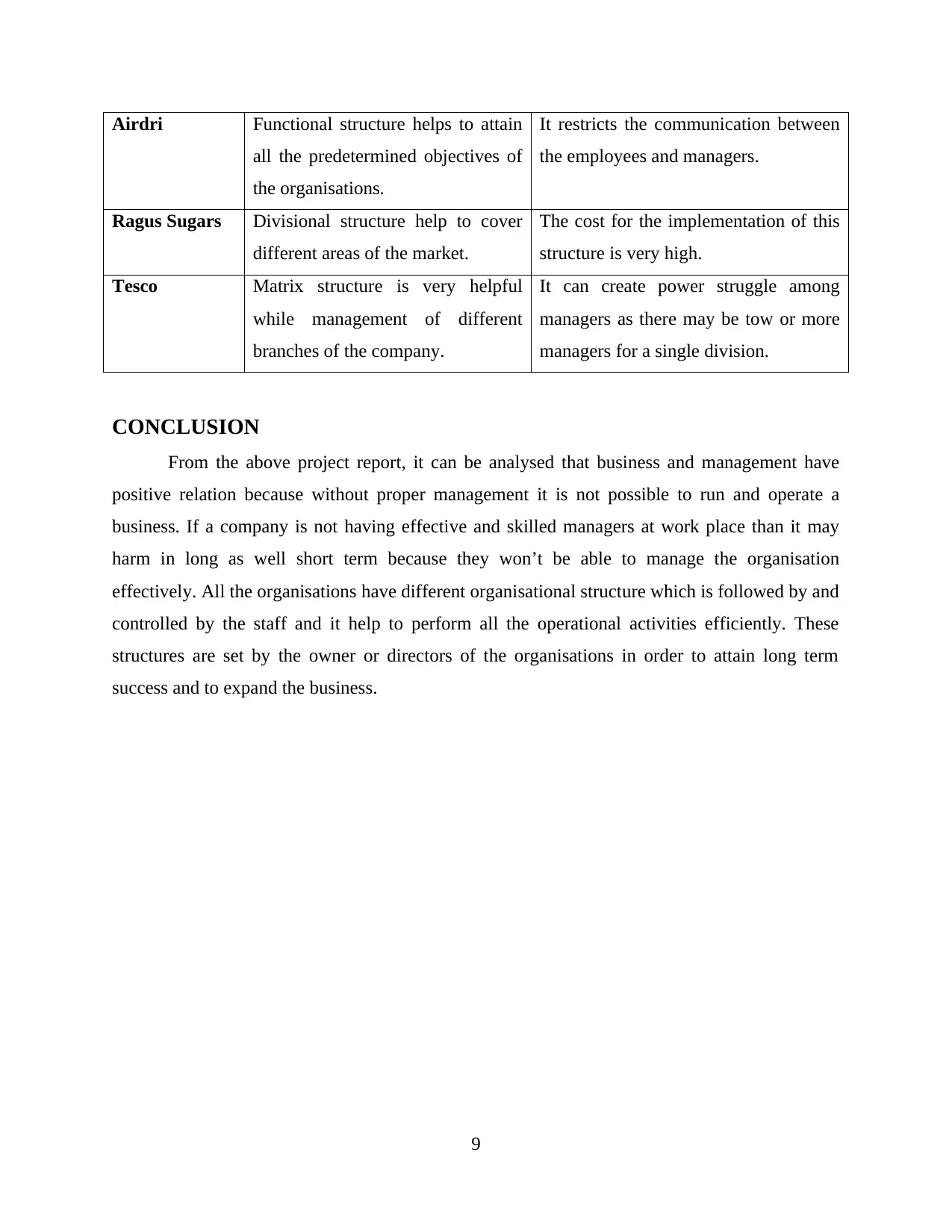
Airdri Functional structure helps to attain
all the predetermined objectives of
the organisations.
It restricts the communication between
the employees and managers.
Ragus Sugars Divisional structure help to cover
different areas of the market.
The cost for the implementation of this
structure is very high.
Tesco Matrix structure is very helpful
while management of different
branches of the company.
It can create power struggle among
managers as there may be tow or more
managers for a single division.
CONCLUSION
From the above project report, it can be analysed that business and management have
positive relation because without proper management it is not possible to run and operate a
business. If a company is not having effective and skilled managers at work place than it may
harm in long as well short term because they won’t be able to manage the organisation
effectively. All the organisations have different organisational structure which is followed by and
controlled by the staff and it help to perform all the operational activities efficiently. These
structures are set by the owner or directors of the organisations in order to attain long term
success and to expand the business.
9
all the predetermined objectives of
the organisations.
It restricts the communication between
the employees and managers.
Ragus Sugars Divisional structure help to cover
different areas of the market.
The cost for the implementation of this
structure is very high.
Tesco Matrix structure is very helpful
while management of different
branches of the company.
It can create power struggle among
managers as there may be tow or more
managers for a single division.
CONCLUSION
From the above project report, it can be analysed that business and management have
positive relation because without proper management it is not possible to run and operate a
business. If a company is not having effective and skilled managers at work place than it may
harm in long as well short term because they won’t be able to manage the organisation
effectively. All the organisations have different organisational structure which is followed by and
controlled by the staff and it help to perform all the operational activities efficiently. These
structures are set by the owner or directors of the organisations in order to attain long term
success and to expand the business.
9
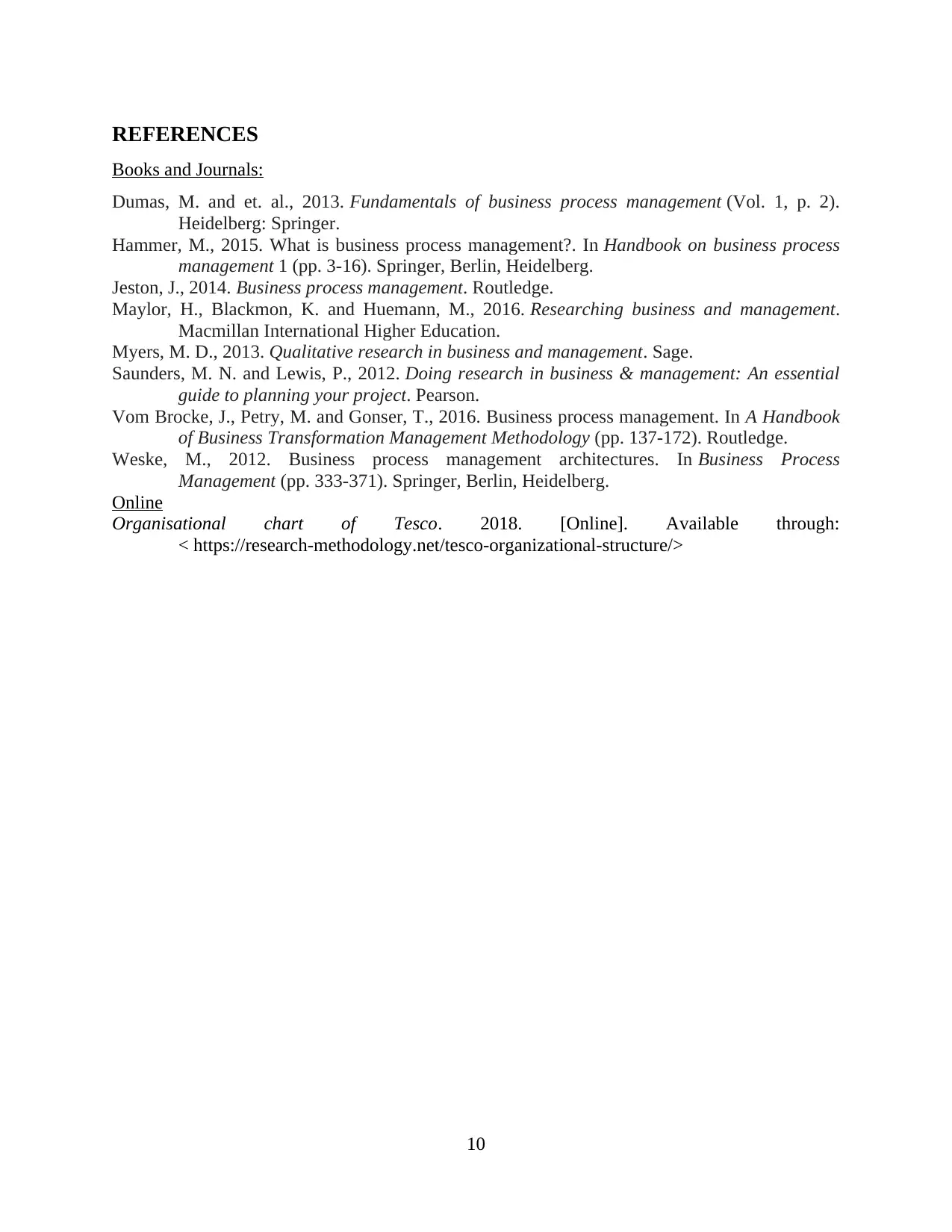
REFERENCES
Books and Journals:
Dumas, M. and et. al., 2013. Fundamentals of business process management (Vol. 1, p. 2).
Heidelberg: Springer.
Hammer, M., 2015. What is business process management?. In Handbook on business process
management 1 (pp. 3-16). Springer, Berlin, Heidelberg.
Jeston, J., 2014. Business process management. Routledge.
Maylor, H., Blackmon, K. and Huemann, M., 2016. Researching business and management.
Macmillan International Higher Education.
Myers, M. D., 2013. Qualitative research in business and management. Sage.
Saunders, M. N. and Lewis, P., 2012. Doing research in business & management: An essential
guide to planning your project. Pearson.
Vom Brocke, J., Petry, M. and Gonser, T., 2016. Business process management. In A Handbook
of Business Transformation Management Methodology (pp. 137-172). Routledge.
Weske, M., 2012. Business process management architectures. In Business Process
Management (pp. 333-371). Springer, Berlin, Heidelberg.
Online
Organisational chart of Tesco. 2018. [Online]. Available through:
< https://research-methodology.net/tesco-organizational-structure/>
10
Books and Journals:
Dumas, M. and et. al., 2013. Fundamentals of business process management (Vol. 1, p. 2).
Heidelberg: Springer.
Hammer, M., 2015. What is business process management?. In Handbook on business process
management 1 (pp. 3-16). Springer, Berlin, Heidelberg.
Jeston, J., 2014. Business process management. Routledge.
Maylor, H., Blackmon, K. and Huemann, M., 2016. Researching business and management.
Macmillan International Higher Education.
Myers, M. D., 2013. Qualitative research in business and management. Sage.
Saunders, M. N. and Lewis, P., 2012. Doing research in business & management: An essential
guide to planning your project. Pearson.
Vom Brocke, J., Petry, M. and Gonser, T., 2016. Business process management. In A Handbook
of Business Transformation Management Methodology (pp. 137-172). Routledge.
Weske, M., 2012. Business process management architectures. In Business Process
Management (pp. 333-371). Springer, Berlin, Heidelberg.
Online
Organisational chart of Tesco. 2018. [Online]. Available through:
< https://research-methodology.net/tesco-organizational-structure/>
10
⊘ This is a preview!⊘
Do you want full access?
Subscribe today to unlock all pages.

Trusted by 1+ million students worldwide
1 out of 12
Related Documents
Your All-in-One AI-Powered Toolkit for Academic Success.
+13062052269
info@desklib.com
Available 24*7 on WhatsApp / Email
![[object Object]](/_next/static/media/star-bottom.7253800d.svg)
Unlock your academic potential
Copyright © 2020–2025 A2Z Services. All Rights Reserved. Developed and managed by ZUCOL.





